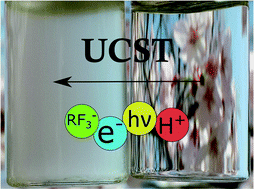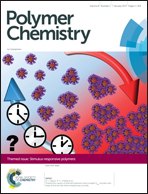How to manipulate the upper critical solution temperature (UCST)?
Abstract
In this mini-review, we discuss multi-stimuli-responsive polymers, which exhibit upper critical solution temperature (UCST) behavior mainly in aqueous solutions. Firstly, we discuss both the lower and upper critical solution temperature behavior of thermoresponsive polymers, to understand the differences between the two. This will be followed by examples of polymers that undergo a UCST phase transition. Secondly, we show how the solution properties of multi stimuli-responsive polymers can be influenced by several factors in addition to temperature, such as counter ions, electricity, light, or pH. Common to all stimuli are their capabilities to induce changes in the conformations and interactions of the polymers. With UCST polymers, the thermoresponsiveness is predominantly dependent upon the presence of strong supramolecular interactions between the polymer side groups. These are known to be affected by the molecular weight of the polymer, the solution concentration, and the presence of salts. With all these different ways to affect the cloud point of the polymers, we have systems that are readily tunable to many applications.

- This article is part of the themed collections: Polymer Chemistry 15th anniversary regional spotlight collection: Europe and Stimulus-responsive polymers


 Please wait while we load your content...
Please wait while we load your content...